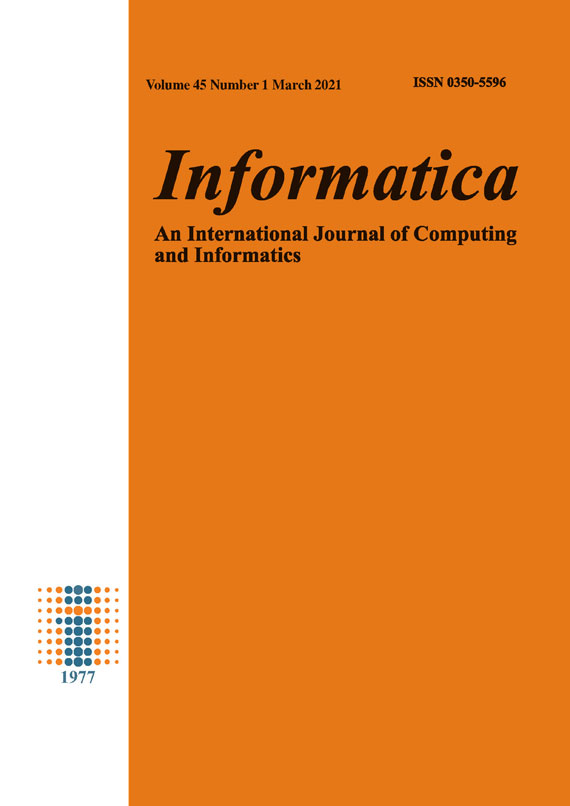Risks Analyzing and management in Software Project Management Using Fuzzy Cognitive Maps with Reinforcement Learning
DOI:
https://doi.org/10.31449/inf.v45i1.3104Abstract
Many projects fail each year simply because a risk has been misjudged, ignored or unidentified. An essential motivation for analyzing the risk of a project is to inform managers in order to reduce the risk, and therefore the loss of the project. Risk analysis can help identify the best actions that would reduce the risk and assess by how much. In the last decades, the Fuzzy Cognitive Map emerged as a powerful tool for modeling and supervising dynamic interactions in complex systems. There is two ways to construct them, the first way by experts of domain and the second way by learning method based on the historical of data. In this paper, we develop a new learning fuzzy cognitive maps based on a reinforcement learning algorithm so called Q-learning and we propose here a new formulation of kosko causality principle. This connection between fuzzy cognitive maps and reinforcement learning allows us to choose based on the historical of data learning process the best and the most important connections between concepts. In this work, we illustrate the effectiveness of the proposed approach by modeling and studying the analysis of project risk management as an economic decision support system.
References
. L. Zadeh, (1965). Fuzzy sets. Inf. Contr., vol. 3, no. 8, pp. 338–353.
. Angeline, P.J., Fogel, D.B. (1997). An evolutionary program for the identification of dynamical systems. SPIE Aerosence 97, Symp. On Neural Networks, S.K. Rogers and D. Ruck (eds.), Vol. 3077, 409-417.
. R.T Futrell, L.I Shafer & D.F Shafer (2001). Quality software project management. Prentice Hall PTR. [2] D. Dubois and H. Prade, (1980), Fuzzy Sets and Systems—Theory and Applications. New York: Academic.
. C. Samantra, S. Datta., S.S Mahapatra. (2017) Fuzzy based risk assessment module for metropolitan construction project: an empirical study. Eng. Appl. Artif. Intell.; 65:449–464.
. O.Taylan, A.O Bafail., R.M Abdulaal., M.R Kabli. (2014) Construction projects selection and risk assessment by fuzzy AHP and fuzzy TOPSIS methodologies. Appl. Soft Comput.; 17:105–116.
. A.Dziadosz, M Rejment. (2015) Risk analysis in construction project-chosen methods. Proc. Eng.; 122:258–265.
. C. Muriana, G. Vizzini, (2017) Project risk management: a deterministic quantitative technique for assessment and mitigation. Int. J. Proj. Manag.; 35(3):320–340.
. B.W. Boehm and T. DeMarco, Software risk management. IEEE Software 14 (3), (1997), 17–19.
. Kosko B. (1986), Fuzzy Cognitive Maps, International Journal Man-Machine Studies, 24:65-75.
. Axelrod Robert (1976). Structure of decision. Princeton university press, Princeton, NewJersy.
. M. Carr, S. Konda, I. Monarch, C. Walker and F. Ulrich, Taxonomy-Based Risk Identification, (1993).
. Maikel Leon1, Ciro Rodriguez1, Maria M. Garcia1, Rafael Bello1 and Koen Vanhoof (2010). Fuzzy Cognitive Maps For Modeling Complex Systems. Springer-Verlag.
. R. Sutton & A.G. Barto, (2005). Reinforcement Learning: An Introduction. A Bradford Book The MIT press Cambridge, Massachusetts London, England.
. E.A. Jasmin, T.P. Imthias Ahamed, V.P. Jagathy Raj (2011). Reinforcement Learning approaches to Economic Dispatch problem. Elsevier.
. L.P. Martin (2014). Markov Decision Processes: Discrete Stochastic and Dynamic Programming. Wiley series in probability and statistics.
. Thomas J. Sargent, (2004). Recursive Macroeconomic Theory. Second edition Lars Ljungqvist Stockholm School of Economics. New York University and Hoover Institution. The MIT Press Cambridge, Massachusetts London, England.
. C. Watkins (1989). Learning from Delayed Rewards. Ph.D. thesis, King's College, Cambridge, England.
. Ibbs, C. W., and Kwak, Y. H. (2000). Assessing project management maturity. Project Management Journal, pp 32–43.
. Boehm, B.W., DeMarco, T. (1997). Software risk management. IEEE Software 14 (3), 17–19.
. Boehm, B.W., 1991. Software risk management principles and practices. IEEE Software 8 (1), 32–41.
. Jones, C., (1998). Minimizing the risks of software development. Cutter IT Journal 11 (6), 13–21.
. Jones, G.F., (2001). What is different about it risks. In: 2001 INCOSE Proceedings of a Symposium on Risk Management..
. Beatrice Lazzerini, Member, IEEE, and Lusine Mkrtchyan (2011) Analyzing Risk Impact Factors Using Extended Fuzzy Cognitive Maps. IEEE SYSTEMS JOURNAL, VOL. 5, NO. 2,
. A. Tlili, S. Chikhi, (2016). Natural Immune System Response as Complexe Adaptive System Using Learning FCMs. IAES International Journal of Artificial Intelligence (IJ-AI) Vol. 4, No. 3, pp 95-104. ISSN: 2252-8938.
Downloads
Published
Issue
Section
License
I assign to Informatica, An International Journal of Computing and Informatics ("Journal") the copyright in the manuscript identified above and any additional material (figures, tables, illustrations, software or other information intended for publication) submitted as part of or as a supplement to the manuscript ("Paper") in all forms and media throughout the world, in all languages, for the full term of copyright, effective when and if the article is accepted for publication. This transfer includes the right to reproduce and/or to distribute the Paper to other journals or digital libraries in electronic and online forms and systems.
I understand that I retain the rights to use the pre-prints, off-prints, accepted manuscript and published journal Paper for personal use, scholarly purposes and internal institutional use.
In certain cases, I can ask for retaining the publishing rights of the Paper. The Journal can permit or deny the request for publishing rights, to which I fully agree.
I declare that the submitted Paper is original, has been written by the stated authors and has not been published elsewhere nor is currently being considered for publication by any other journal and will not be submitted for such review while under review by this Journal. The Paper contains no material that violates proprietary rights of any other person or entity. I have obtained written permission from copyright owners for any excerpts from copyrighted works that are included and have credited the sources in my article. I have informed the co-author(s) of the terms of this publishing agreement.
Copyright © Slovenian Society Informatika








